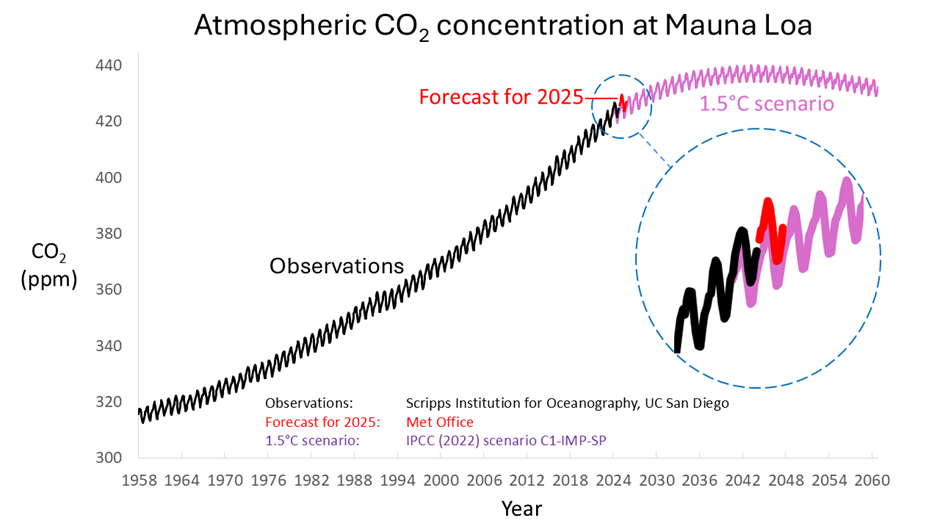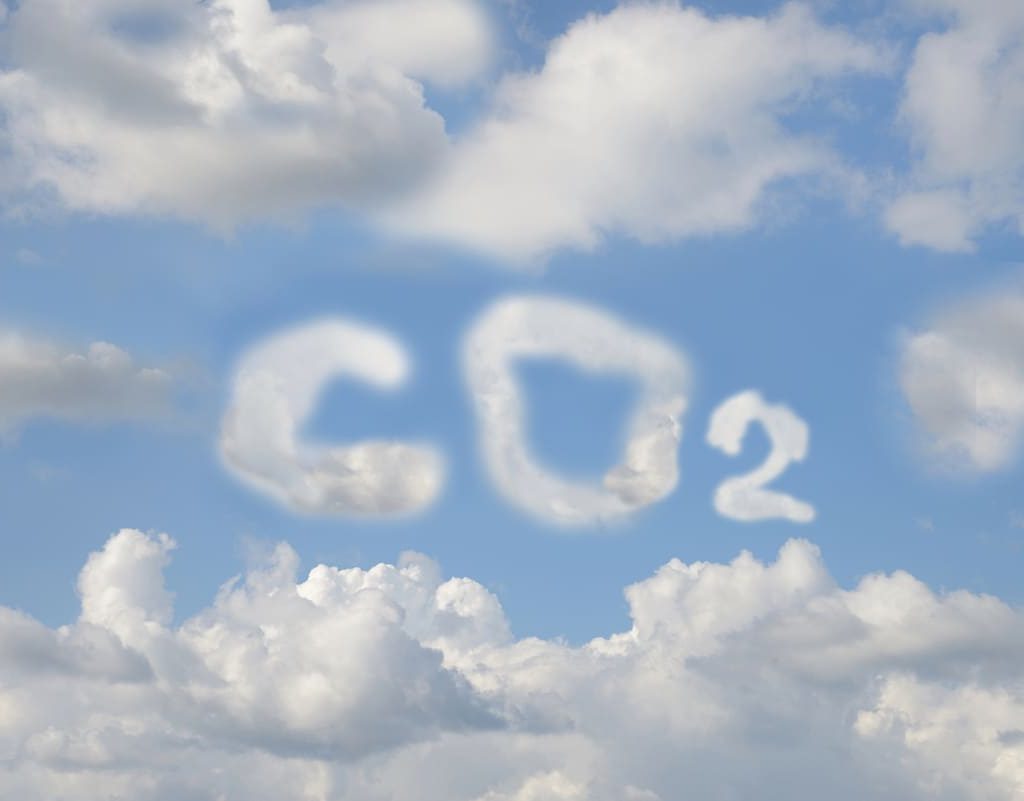
Record-breaking CO2 Levels in 2024: A Climate Alarm
Last year, atmospheric CO2 concentrations rose at an unprecedented rate, reaching 3.58 parts per million (ppm) – a staggering 26% more than the anticipated increase of 2.84 ppm. This dramatic surge, driven primarily by climate change-induced wildfires, underscores the urgent need to address global carbon emissions. According to the UK Met Office, the current growth rate of CO2 is double what is compatible with keeping global temperature rise below 1.5°C.
Alarming Growth in CO2: An Incompatible Trend
In addition to record-breaking global warming, 2024 saw the fastest-ever rise in atmospheric CO2 concentration levels, with a yearly increase of 3.58 ppm compared to 2023. This exceeds the scenarios outlined by the Intergovernmental Panel on Climate Change (IPCC) for maintaining the Paris Agreement’s most ambitious targets.
The Met Office study highlights that the permissible annual CO2 increase to stay on track for a 1.5°C threshold is just 1.8 ppm—half the current rate. Even in the IPCC’s three most optimistic scenarios, where temporary overshoots of 0.1°C above the 1.5°C limit are considered, CO2 growth slows from 2.41 ppm in the 2010s to 1.33–1.79 ppm in the 2020s.
A Slight Reprieve Predicted for 2025
The Met Office projects a less extreme rise in CO2 for 2025, estimating an increase of 2.26 ppm (with a margin of uncertainty of ±0.56 ppm). This moderation is attributed to the transition from El Niño to La Niña conditions, which are expected to partially strengthen natural carbon sinks.
Causes Behind the Record CO2 Increase
The unexpected spike in CO2 concentration is attributed to several factors:
- Fossil Fuel Emissions: Global emissions reached an all-time high.
- Weakened Carbon Sinks: Tropical forests and other natural sinks absorbed less CO2.
- Climate-Driven Wildfires: Wildfires fueled by climate change played a significant role.
Global wildfire emissions between January and September 2024 ranged from 1.6 to 2.2 billion metric tons of carbon (GtC)—11–32% above the 2014–2023 average for the same period. The Northern Hemisphere experienced even sharper increases, with emissions rising by 26–44% above the decade’s average, contributing significantly to the record-breaking CO2 levels.
